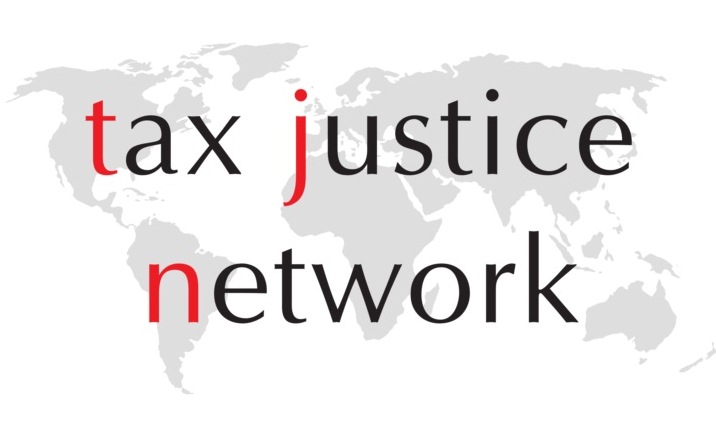New Report: Ten Reasons to Defend the Corporate Income Tax
March 19th, 2015
March 19th, 2015

Trillions in public spending at risk as attacks on corporate tax intensify
Today the Tax Justice Network publishes a landmark report entitled Ten Reasons to Defend the Corporation Tax.
The short summary document is here, and the full document is here.
The corporate income tax is under attack. Nation states are scrambling to offer multinational corporations an ever growing feast of lower taxes, loopholes and incentives. Lobbyists and politicians constantly try to persuade us that the corporate tax is a bad, inefficient, unreasonable tax. Yet it is one of the most precious of all taxes.
One of our ten points concerns revenue. Corporate income taxes have added up to almost US$ 7.5 trillion since the global financial crisis erupted in 2008, in OECD countries alone. This is nearly half of all OECD public health spending and around double the amount spent on public tertiary education, one of the fundamental underpinnings of corporate profits.[i] It is even more important for developing countries.
And yet the corporate tax is disappearing fast. Average headline tax rates are around half of what they were in 1980, and on current trends will reach zero in the next two or three decades. We may not even have this much time, given the influence of the large accountancy firms and corporate lobbyists actively working to hasten its demise.
Since the 1970s, multinational corporate profits have soared but the constant attacks on the corporate tax mean nation states are capturing a dwindling share of this bonanza. The result is greater inequality, higher taxes for poorer sections of society, distorted markets, and rising fears of plutocracy.
The attached documents outlines ten reasons why it is essential to defend the corporate income tax. In summary, these are:
1. Corporate income taxes raise essential revenue for schools, hospitals and the rule of law.
2. Less well understood is the fact that the corporate tax helps hold the whole tax system together: without it, people will stash their money in zero-tax corporate structures and defer or even escape tax entirely.
3. The corporate income tax curbs inequality and protects democracy. The tax charge falls largely on the wealthy owners of capital: without it, corporations and their wealthy owners free-ride off the public services paid for by others.
4. Corporate taxes enhance national welfare. So-called “competitive” tax-cutting is fools’ gold, particularly for the larger economies.
5. Corporate tax cuts, incentives and loopholes ricochet around the world. A tax cut in one place may suck capital out of others and prompt other jurisdictions to follow suit, in a race to the bottom where the only winners are the very wealthiest sections of society.
6. The corporate income tax is particularly important for developing countries, which rely more heavily on it than rich countries do.
7. Corporate taxes can rebalance economies. Corporations around the world are hoarding cash, not investing it. Corporate taxes harness this idle cash and put it to productive uses, via government spending on education, roads and other public services.
8. The corporate tax curbs rent-seeking. Because rent-seeking tends to be more profitable than genuine productive activity, the corporate tax falls more heavily on it.
9. Tax cuts and special incentives don’t stop at zero: they turn negative. In this race to below the bottom there is no limit on corporations’ zeal for free-riding off public goods and subsidies paid for provided by others.
10. Corporate taxes spur transparency and more accountable government. To collect the tax, states must put in place good tracking measures.
Our document also addresses seven common myths about the tax: that it’s fine because tax avoidance ‘is legal;’ that taxes are ‘too high’; that tax is ‘theft’; that the corporate tax is unfair ‘double tax’; that it is inefficient and should be replaced by VAT; that corporate directors have a fiduciary duty to minimise tax; that the tax falls most heavily on ‘workers’; and that the Laffer Curve and so-called Dynamic Scoring are useful guides to policy.
In short, the corporate income tax is worth fighting for.
Please see the short summary and the full report.
John Christensen, Director of the Tax Justice Network, said:
“The corporate income tax is one of the best and most direct ways of taxing capital. On current trends the tax will soon disappear, ushering in an era of unaccountable, untaxed plutocracy and towering inequality in all countries.”
Nicholas Shaxson, the report’s main author, said:
“Corporate profits are soaring, as workers lose political battles with the owners of capital; as multinationals shake off pesky regulations; and as public assets are sold off. Yet taxpayers are seeing less and less of this bonanza, as corporations increasingly free-ride off public goods, leaving everyone else to pay the taxes they won’t. The result? Inequality rises, whole economies are thrown out of balance, and democracy and prosperity suffer.”
Louis Brandeis, a former U.S. Supreme Court Justice, said:
“We can either have democracy in this country or we can have great wealth concentrated in the hands of a few. But we can’t have both.”
Contact:
John Christensen, Director, Tax Justice Network
+44 7979 868 302
Nicholas Shaxson, Tax Justice Network
+49 170 356 5101
www.taxjustice.net
[i] From OECD Revenue Statistics, Comparative Tables, code 1210, corporate tax revenues as a share of GDP. (Data source excludes OECD members Chile, Hungary, Mexico, Poland and Slovenia.) GDP data sourced from OECD national accounts data, GDP, US$, current prices, current PPPs. Total for 2008-2013 is $6.2 trn, with an annual average just over $1tn/year. Adding estimate for 2014 gives $7.3 trn including 2014 . Education data from Education At a Glance, 2013 OECD indicators, and earlier years. The tertiary share has been stable at ca. 1.5 percent of GDP; corporate tax revenues have averaged 3.0 percent of GDP. Education data from OECD StatExtracts, General Government total current Expenditure, % of GDP.